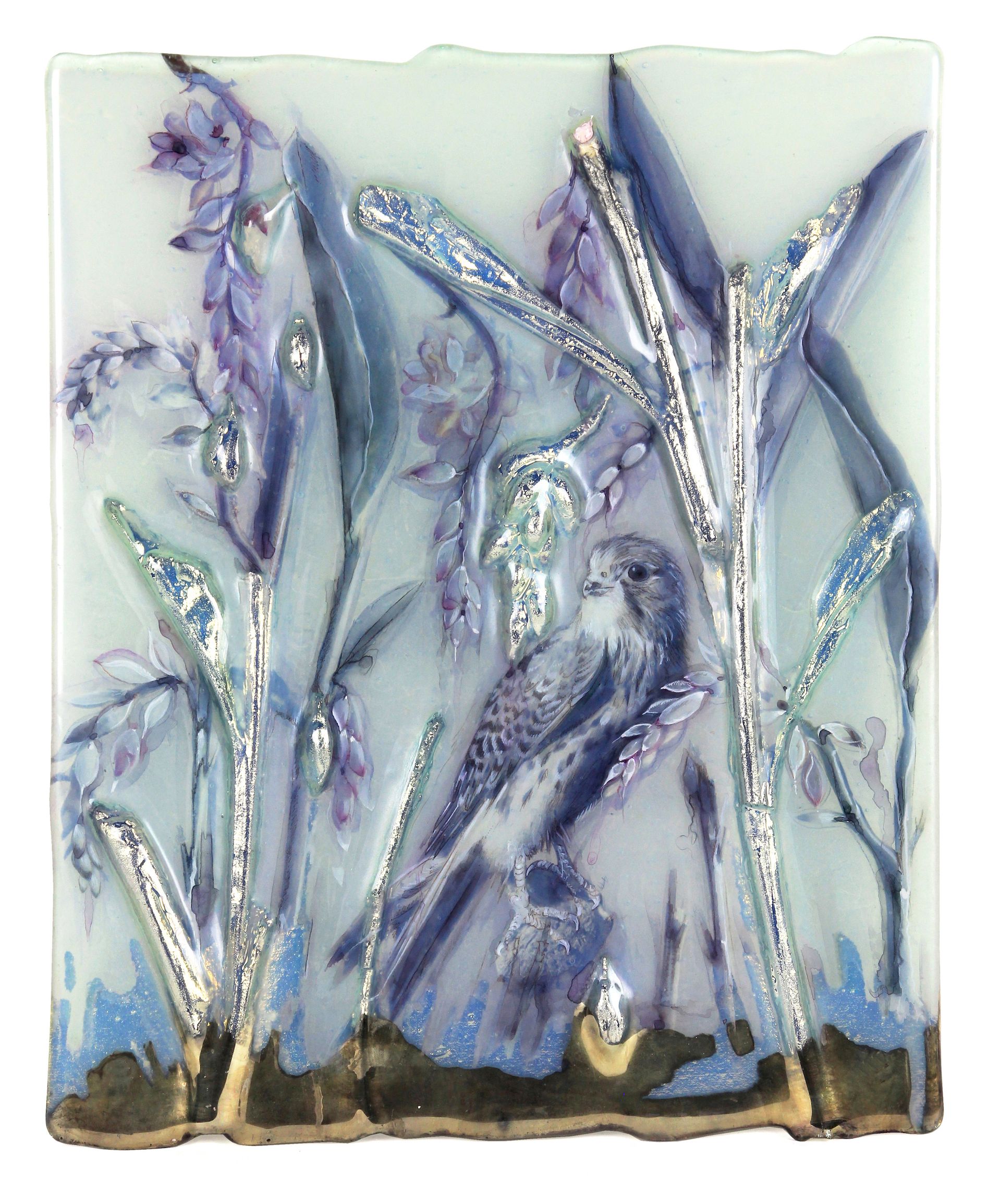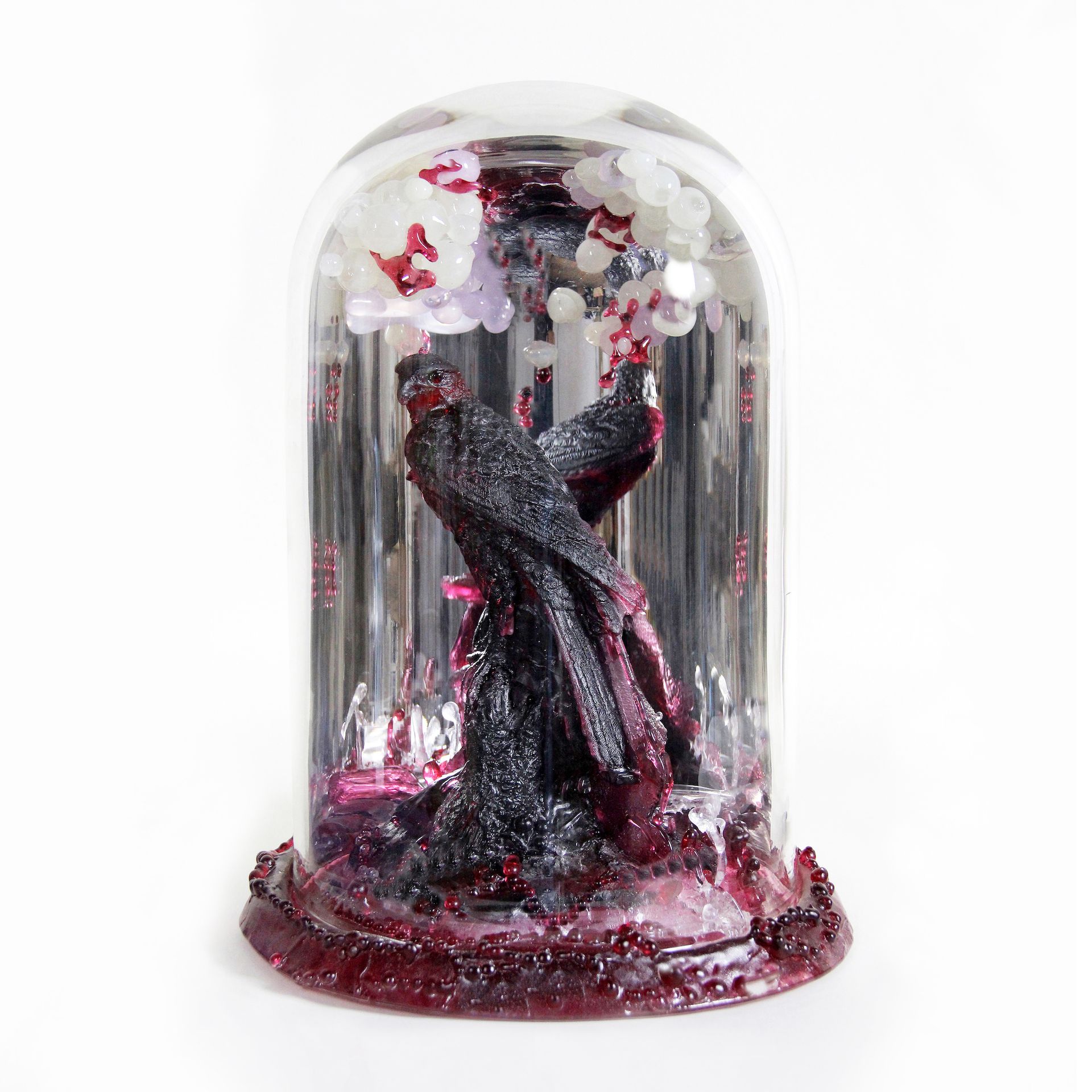In Sibylle Peretti’s glass relief Home Range (2021), now at the Bellevue Arts Museum in Washington (until 29 May), a field of sunflowers near Chornobyl, graceful but barren, is empty but for a few stalks. In each lower corner are foxes, the only sign of animal life. No humans are depicted in this glimpse of a post-anthropocene earth.
“How does the landscape look when we are gone, when areas are not populated anymore?” Peretti asks. “In most studies, animals and nature take over, very easily.”
Animals are present in most of the glass and mixed media reliefs in Untamed, Peretti’s upcoming show at Heller Gallery in New York (24 March-30 April). A recent focus has been Chornobyl, irradiated after the deadly nuclear accident in 1986. In late February, before Peretti had a chance to visit, Russian troops arrived and put the contaminated area at greater risk. Before the attack, she notes, the still-radioactive area was a haven for wildlife including buffalo, horses, foxes and rabbits.
Peretti knows threatened places. As a child in the Ruhr Valley of Germany, she played amid coal slag heaps. Trains carrying steel screeched past her home day and night. She now lives most of the year in New Orleans—in the “cancer corridor”—where her house on the west bank of the Mississippi escaped the flooding of Hurricane Katrina.
“The fragility of glass is important to me,” she says. “It suggests the mortality and fragility of humans and life, but the interesting part of glass is its resilience. It can be made intact again.”

Sibylle Peretti, Ginger Roost, 2022 Courtesy the artist and Heller Gallery, New York
Some of Peretti’s images in glass are her own photographs. She found others, like the Chornobyl foxes in Home Range, on the internet. She attaches images to glass and then encloses them in added layers (sometimes with twigs and beads), creating transparent, frieze-like collages in three dimensions.
Chornobyl in glass and on the ground
Peretti stresses that her recent works are imagined scenes, not documentary collages. Recent events around Chornobyl underline the difference.
By phone, displaced to western Ukraine, the artists and environmental activists Valerie and Sveta Korshunov, who have organised events in the Chornobyl exclusion zone, say Russian forces started forest fires near the plant to empty the entire zone on 11 and 12 March, but failed because of wintry weather conditions. Subsequent efforts have succeeded, raising concerns that wildfires near the plant could generate radioactive smoke.
As workers held hostage at the plant operate the reactors at gunpoint, measuring radiation and temperatures under extreme conditions, they say, a mishap could achieve the same effect. The hundreds of Chornobyl works who had been working at the plant since the day before the Russian invasion were relieved only recently, after 600 hours on the job.
Hearing of those events from afar, Peretti admits that her recent works contain elements of hope. Her next planned project, all in red, “will be apocalyptic”.
“Sometimes people need to be pushed,” she says.

Sibylle Peretti, Where the Rubies Grow III, 2018 Courtesy the artist and Heller Gallery, New York
- Sibylle Peretti: Untamed, 24 March-30 April, Heller Gallery


